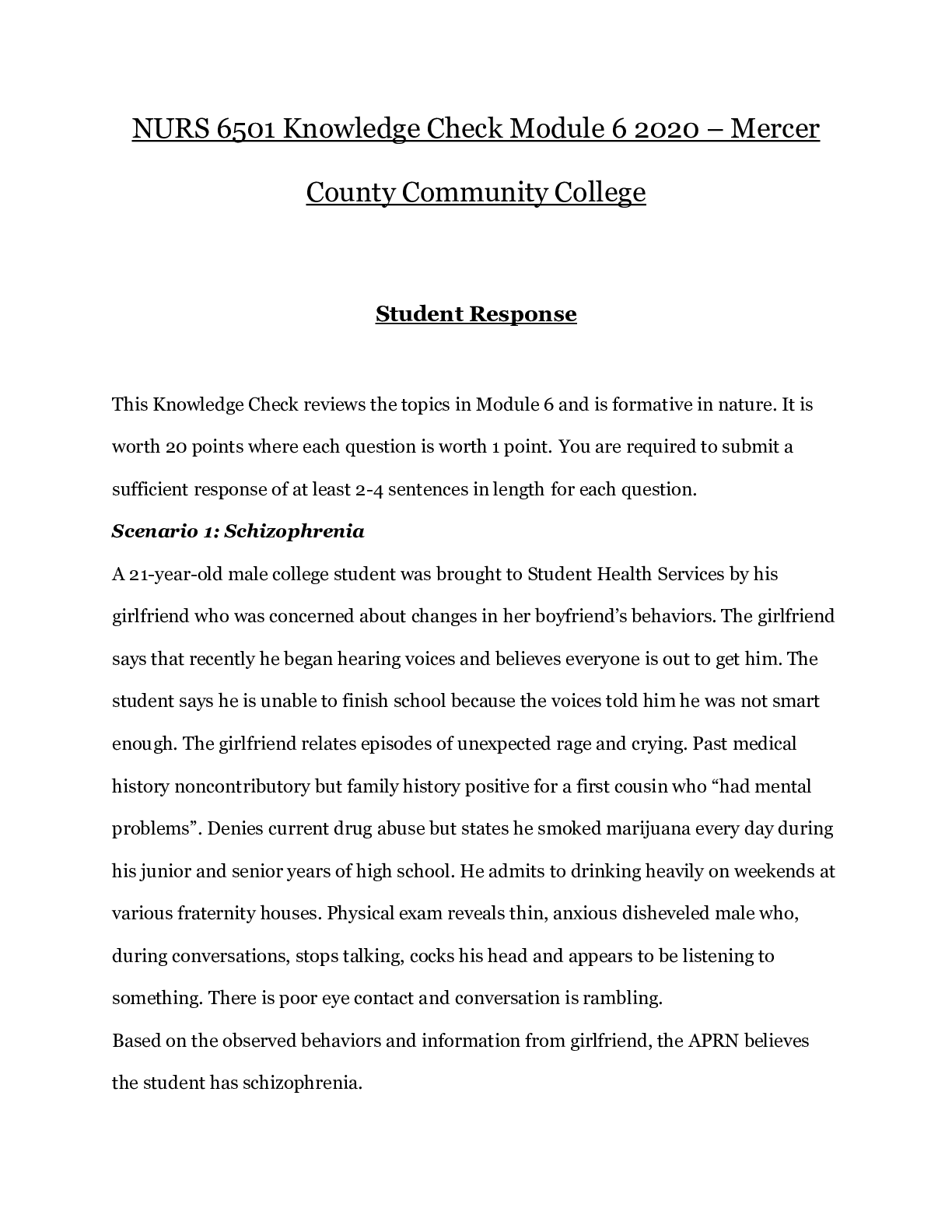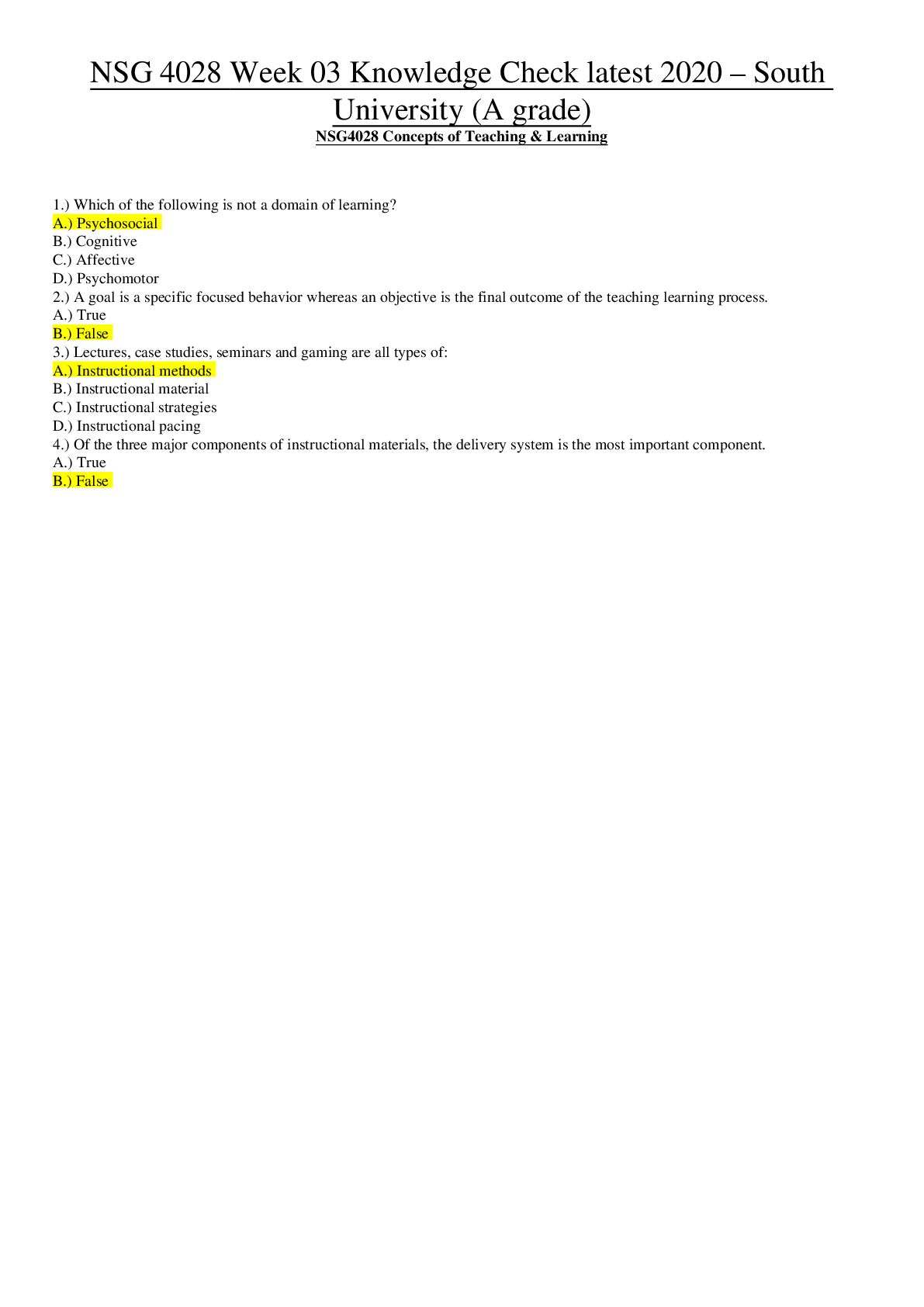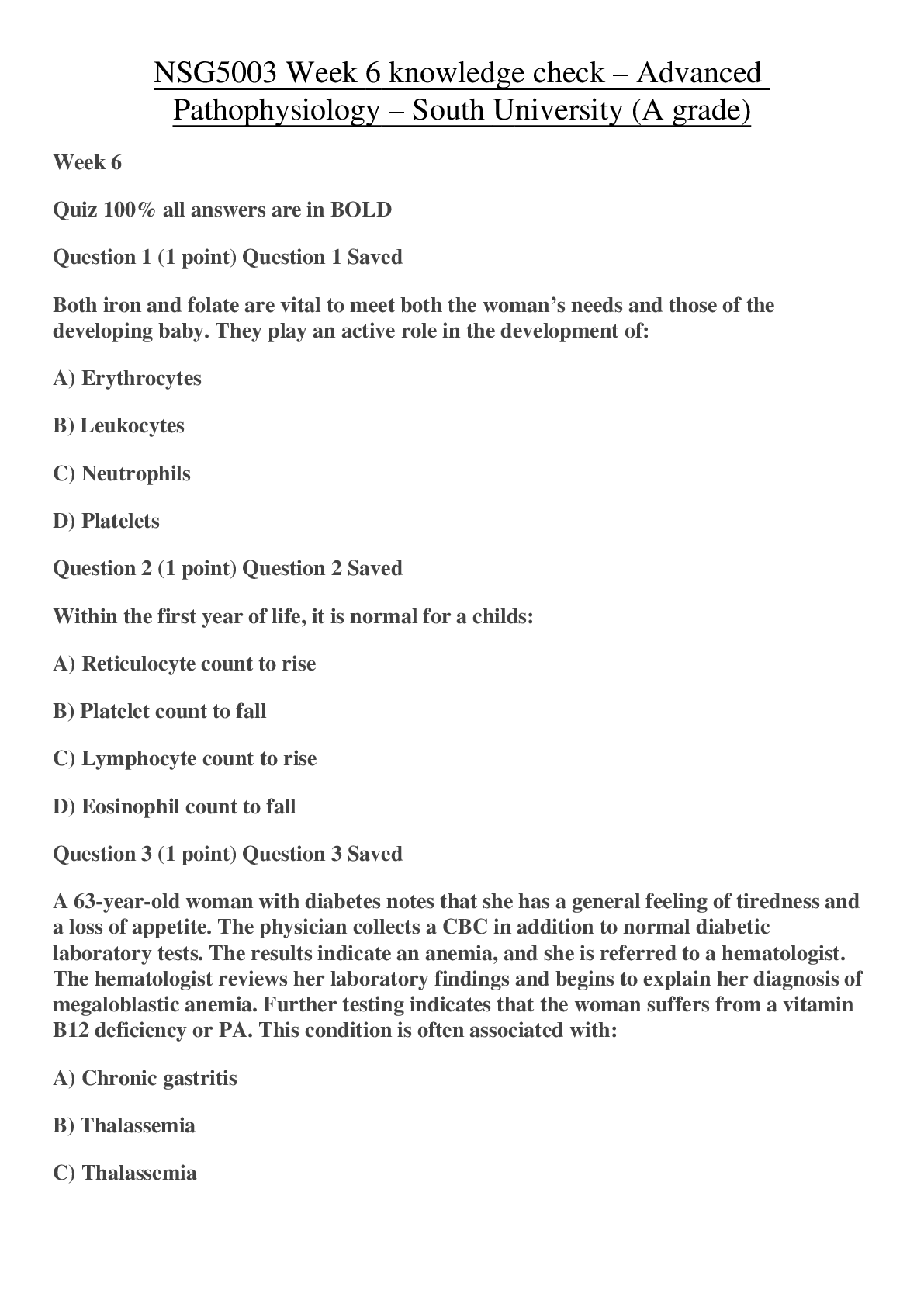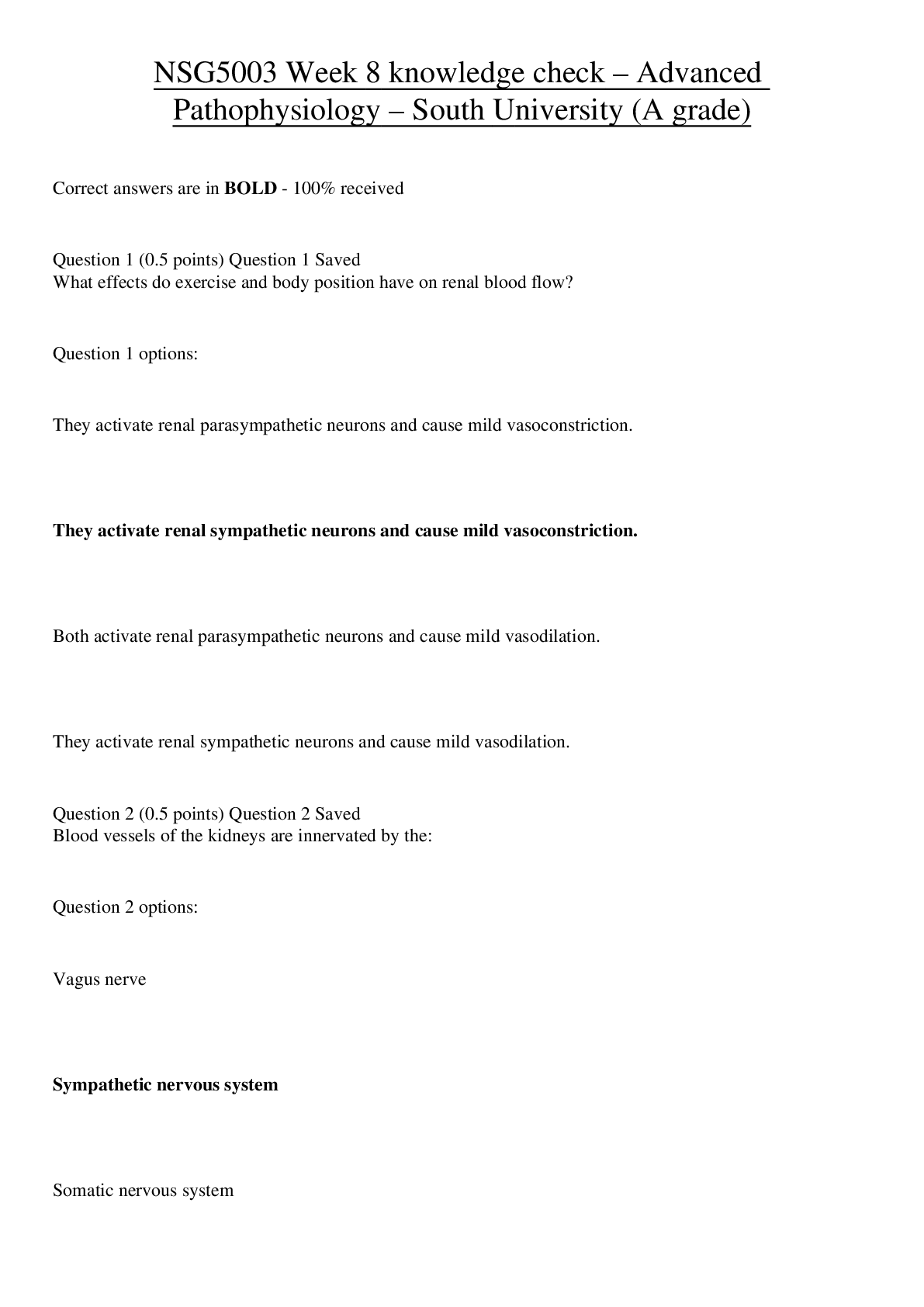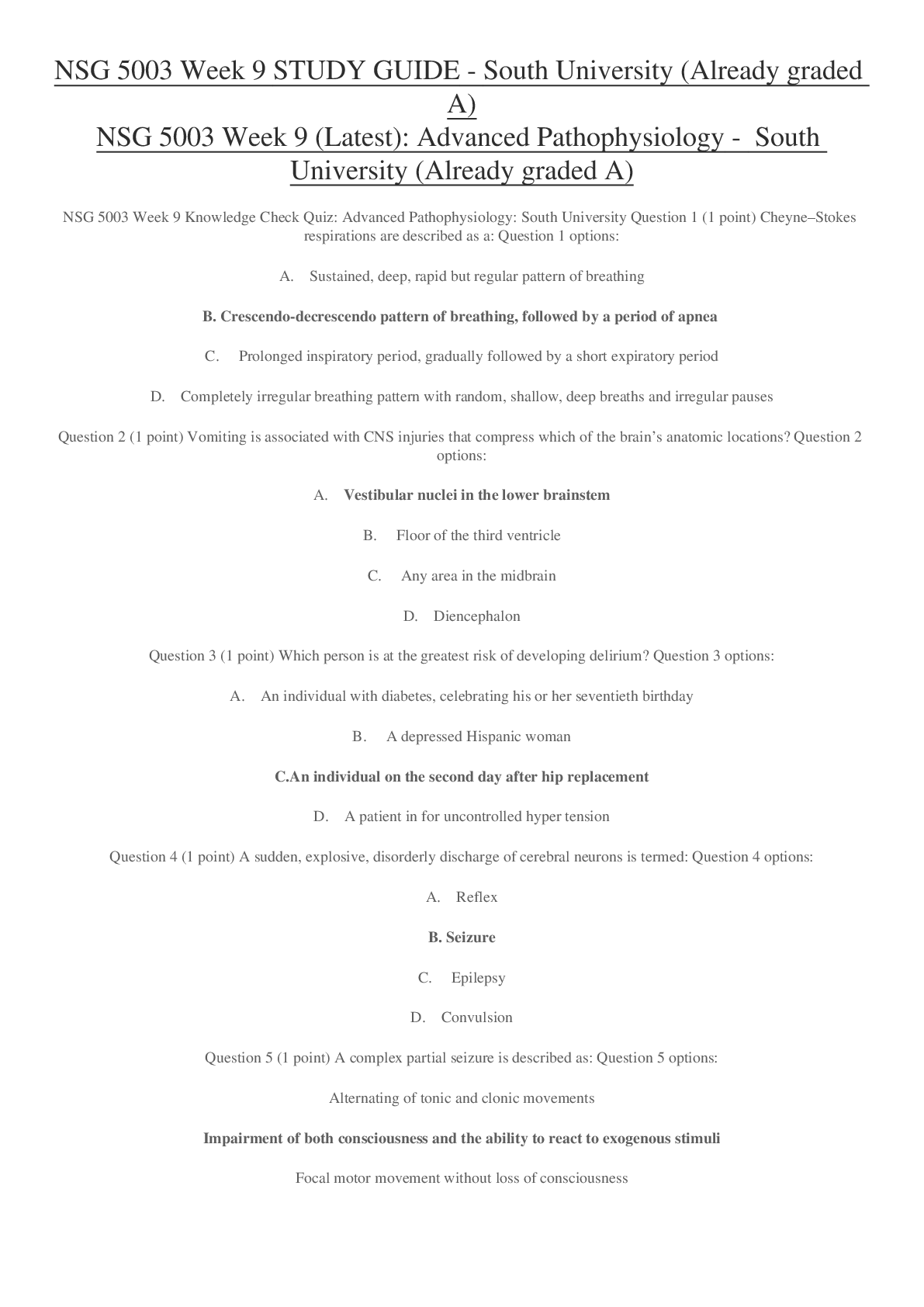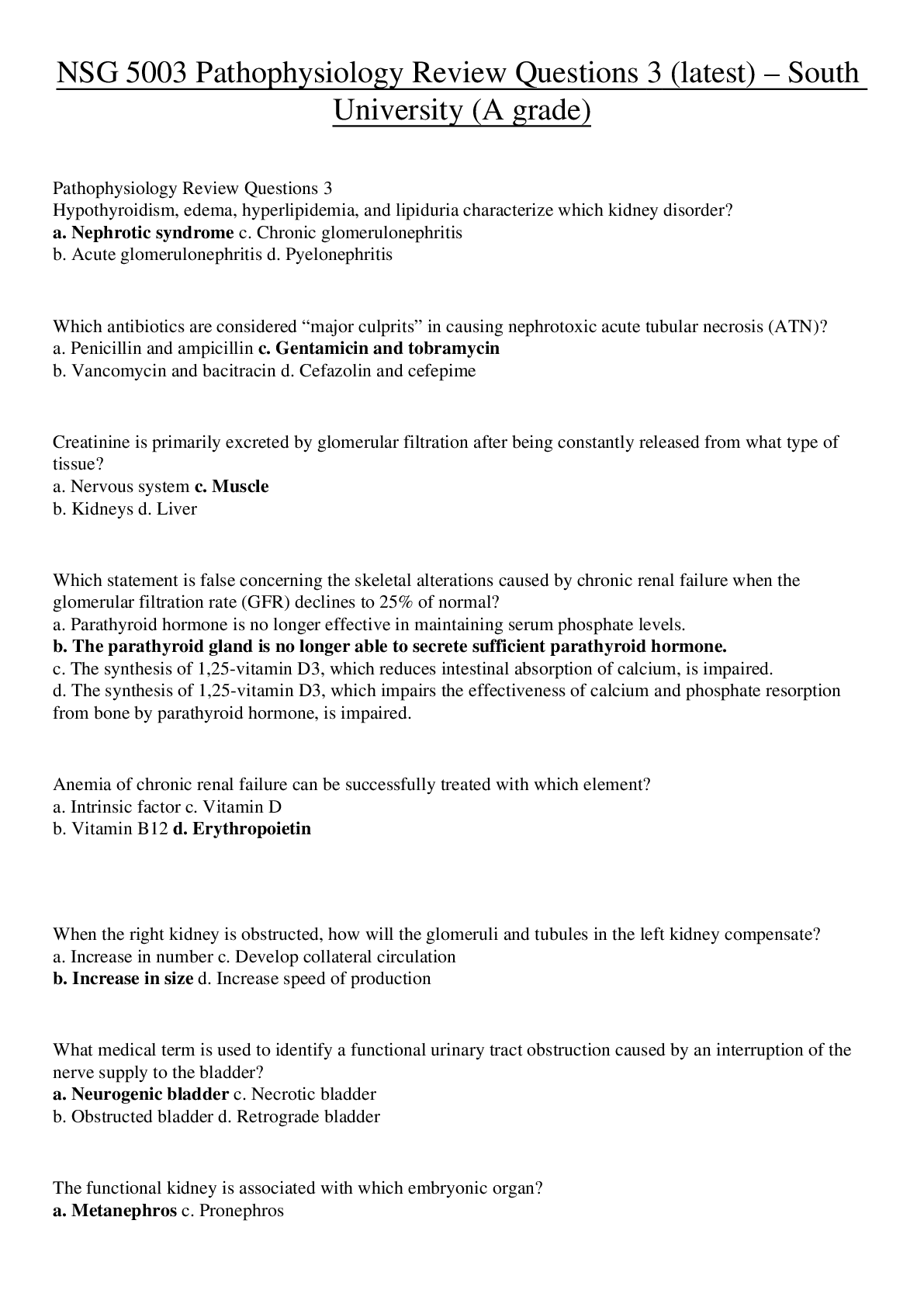Pathophysiology > EXAM > NSG 5003 Pathophysiology Review Questions 1 (latest) – South University (A grade) (All)
NSG 5003 Pathophysiology Review Questions 1 (latest) – South University (A grade)
Document Content and Description Below
NSG 5003 Pathophysiology Review Questions 1 (latest) – South University (A grade) Pathophysiology Review Questions 1 ____ 1. Besides dyspnea, what is the most common characteristic associated wi... th pulmonary disease? a. Chest pain b. Digit clubbing c. cough d. Hemoptysis ____ 2. Sitting up in a forward-leaning position generally relieves which breathing disorder? a. Hyperpnea c. Apnea b. Orthopnea d. Dyspnea on exertion ____ 3. Kussmaul respirations as a respiratory pattern may be associated with which characteristic(s)? a. Alternating periods of deep and shallow breathing b. Pulmonary fibrosis c. Chronic obstructive pulmonary disease d. Slightly increased ventilatory rate, large tidal volumes, and no expiratory pause ____ 4. Which statement is true regarding ventilation? a. Hypoventilation causes hypocapnia. b. Hyperventilation causes hypercapnia. c. Hyperventilation causes hypocapnia. d. Hyperventilation results in an increased partial pressure of arterial carbon dioxide (PaCO2). ____ 5. What term is used to describe the selective bulbous enlargement of the distal segment of a digit that is commonly associated with diseases that interfere with oxygenation of the blood? a. Edema c. Angling b. Clubbing d. Osteoarthropathy ____ 6. Pulmonary edema and pulmonary fibrosis cause hypoxemia by which mechanism? a. Creating alveolar dead space b. Decreasing the oxygen in inspired gas c. Creating a right-to-left shunt d. Impairing alveolocapillary membrane diffusion ____ 7. High altitudes may produce hypoxemia through which mechanism? a. Shunting c. Decreased inspired oxygen b. Hypoventilation d. Diffusion abnormalities ____ 8. Which condition is capable of producing alveolar dead space? a. Pulmonary edema c. Atelectasis b. Pulmonary emboli d. Pneumonia ____ 9. What is the most common cause of pulmonary edema? a. Right-sided heart failure c. Mitral valve prolapse b. Left-sided heart failure d. Aortic stenosis ____ 10. Pulmonary edema usually begins to develop at a pulmonary capillary wedge pressure or left atrial pressure of how many millimeters of mercury (mm Hg)? a. 10 c. 30 b. 20 d. 40 [Show More]
Last updated: 1 year ago
Preview 1 out of 4 pages
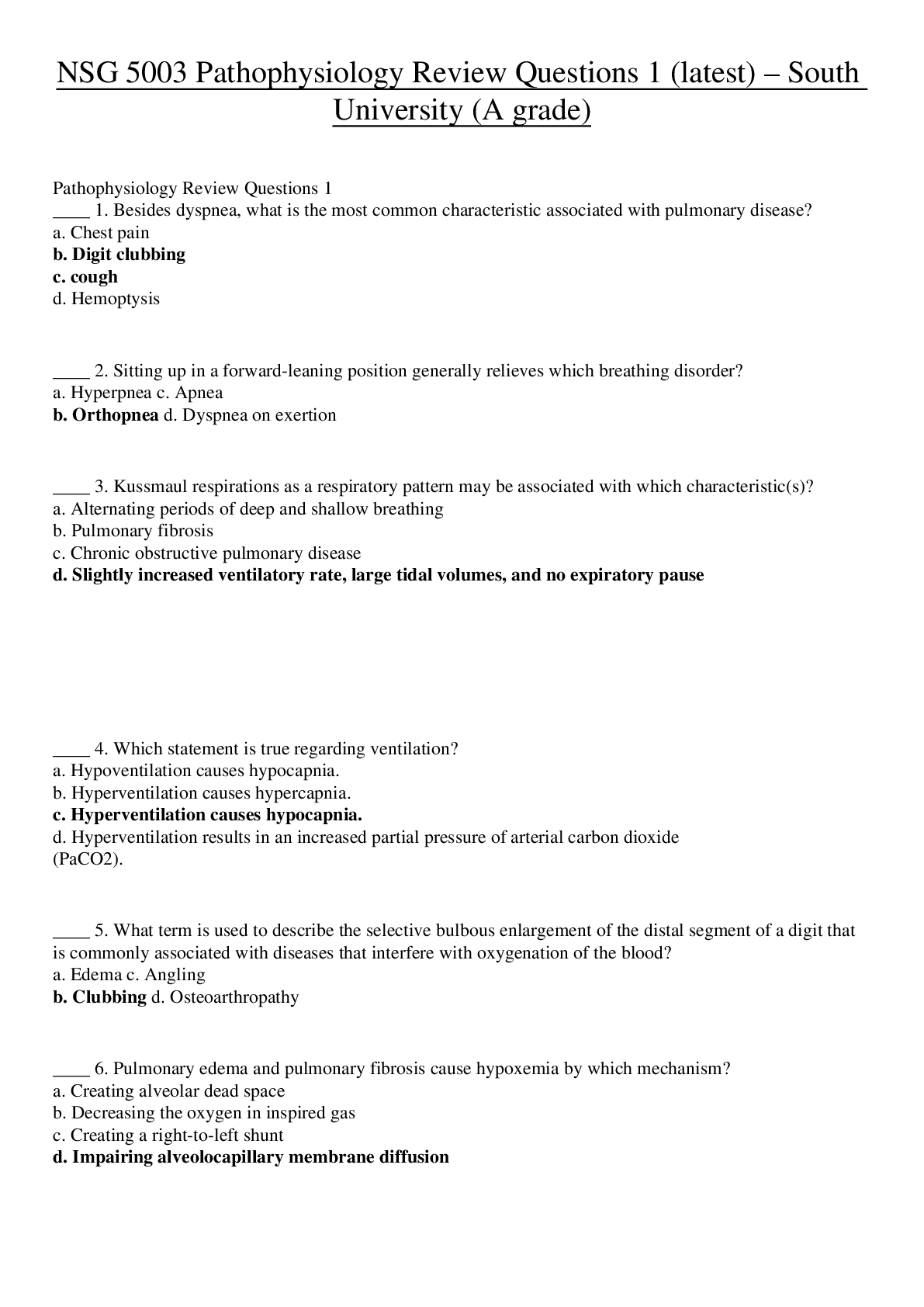
Reviews( 0 )
Document information
Connected school, study & course
About the document
Uploaded On
May 17, 2020
Number of pages
4
Written in
Additional information
This document has been written for:
Uploaded
May 17, 2020
Downloads
0
Views
71














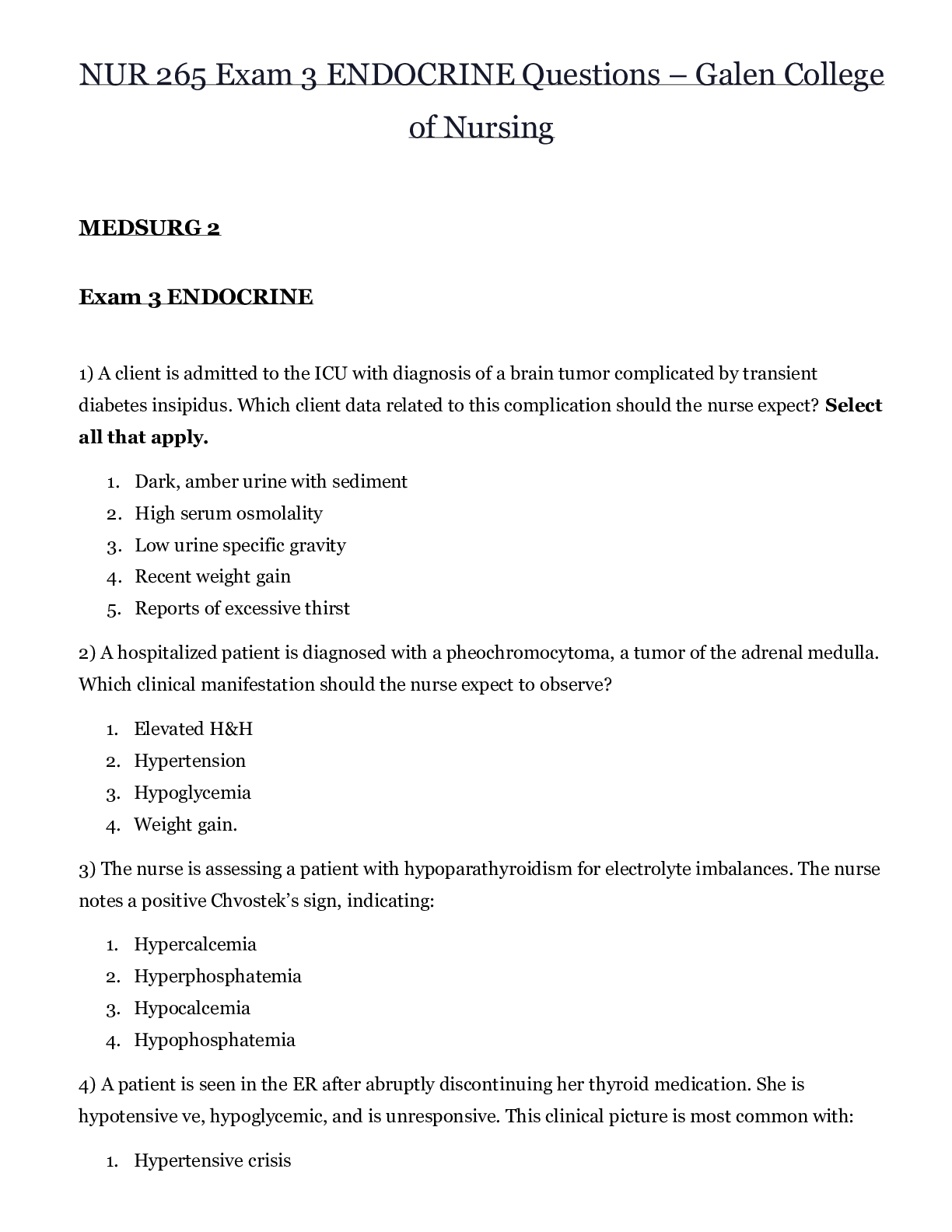
 – CHAMBERLAIN COLLEGE OF NURSING.png)
